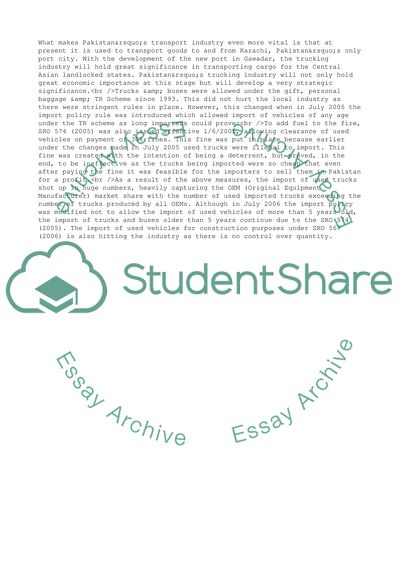Cite this document
(The Effect of Imported Trucks on Pakistan's Local Trucking Industry an Essay, n.d.)
The Effect of Imported Trucks on Pakistan's Local Trucking Industry an Essay. https://studentshare.org/business/1711304-the-effect-of-imported-trucks-on-pakistans-local-trucking-industry-and-the-local-trucking-market-economics
The Effect of Imported Trucks on Pakistan's Local Trucking Industry an Essay. https://studentshare.org/business/1711304-the-effect-of-imported-trucks-on-pakistans-local-trucking-industry-and-the-local-trucking-market-economics
(The Effect of Imported Trucks on Pakistan'S Local Trucking Industry an Essay)
The Effect of Imported Trucks on Pakistan'S Local Trucking Industry an Essay. https://studentshare.org/business/1711304-the-effect-of-imported-trucks-on-pakistans-local-trucking-industry-and-the-local-trucking-market-economics.
The Effect of Imported Trucks on Pakistan'S Local Trucking Industry an Essay. https://studentshare.org/business/1711304-the-effect-of-imported-trucks-on-pakistans-local-trucking-industry-and-the-local-trucking-market-economics.
“The Effect of Imported Trucks on Pakistan'S Local Trucking Industry an Essay”. https://studentshare.org/business/1711304-the-effect-of-imported-trucks-on-pakistans-local-trucking-industry-and-the-local-trucking-market-economics.


